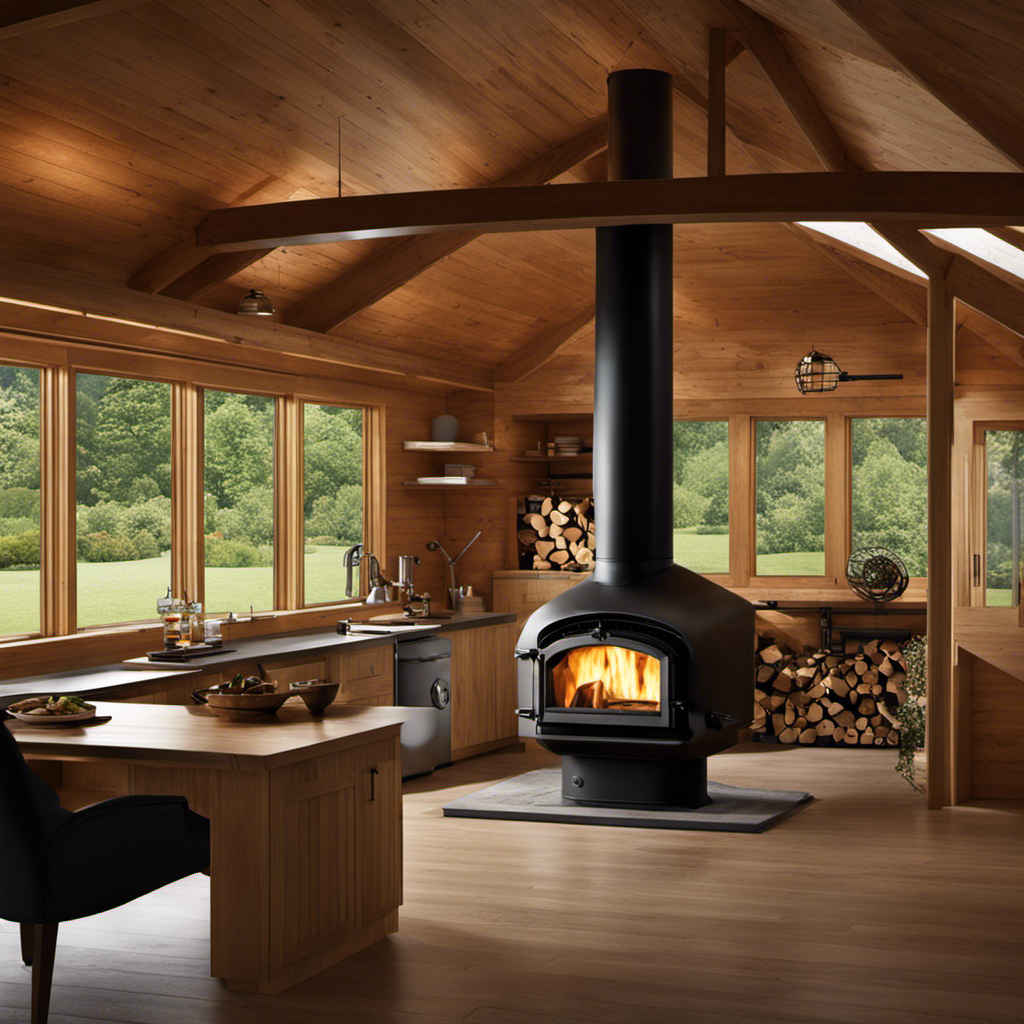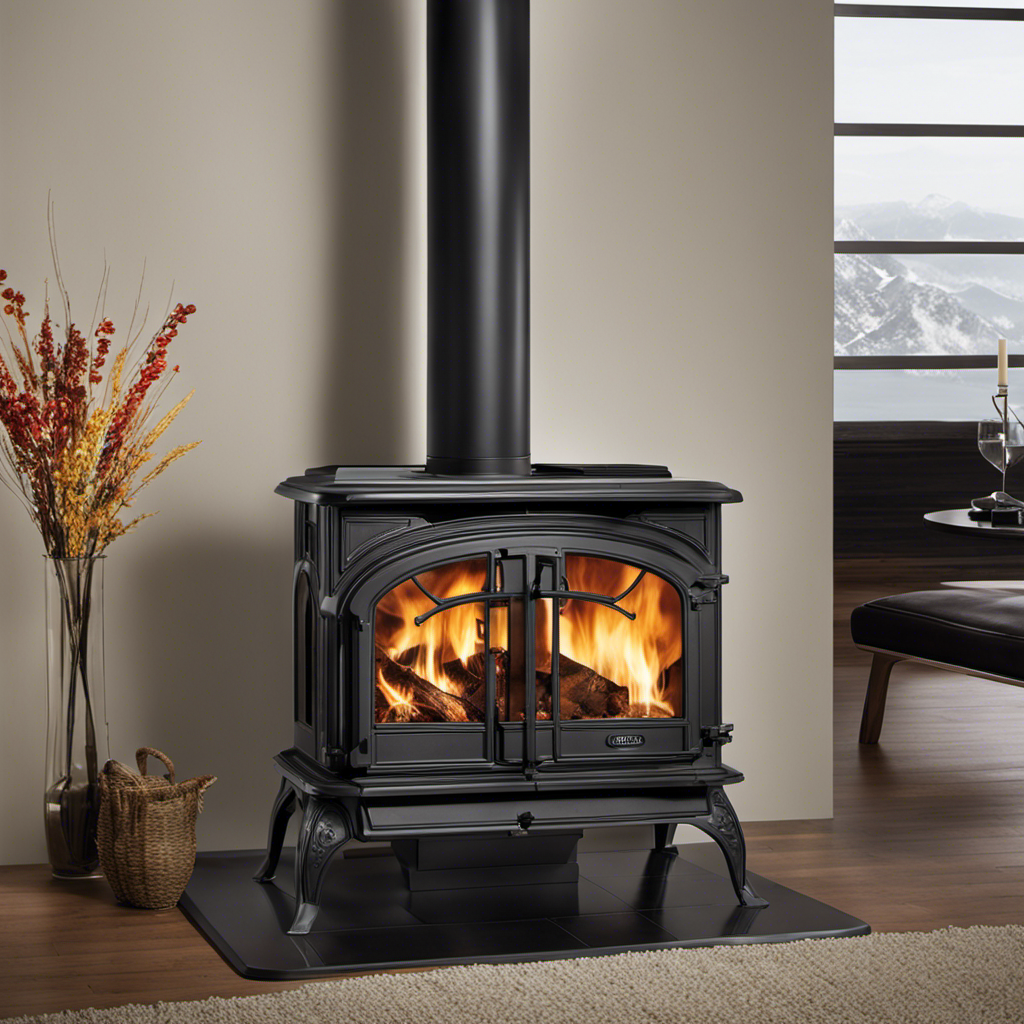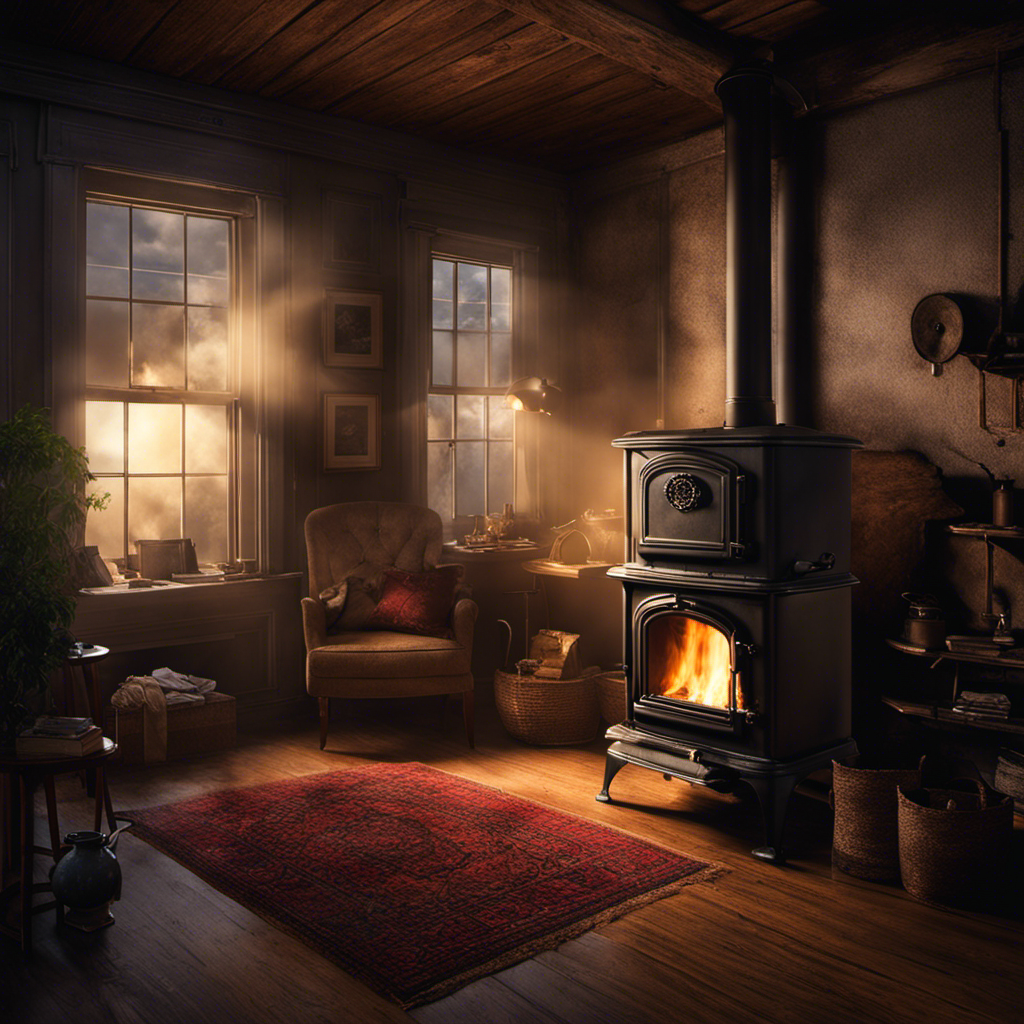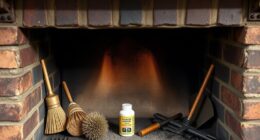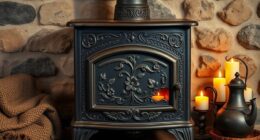As someone passionate about DIY projects, I’ve always been intrigued by the concept of turning my garage into a warm, welcoming space. What better way to achieve this transformation than by adding a wood stove?
In this article, I’ll guide you through the process of choosing the perfect location, ensuring proper ventilation, and preparing your garage for the installation.
From connecting the flue pipe to essential safety tips, I’ll provide you with all the knowledge and details you need to make your garage wood stove dreams a reality.
Key Takeaways
- Choose a location for the wood stove that minimizes the risk of fire and follows safety guidelines.
- Consult with a professional for proper ventilation and chimney installation to ensure safe operation.
- Prepare the garage by clearing clutter, insulating walls and ceiling, and ensuring proper electrical capacity.
- Install the wood stove properly, connecting the flue pipe and installing a chimney cap to prevent debris and animals from entering.
Choosing the Right Location for Your Wood Stove
I’m considering where to install my wood stove, so I’ll need to research the best location for it.
When it comes to wood stove installations, safety should always be the top priority. One of the key factors to consider is potential fire hazards. It’s crucial to choose a location that minimizes the risk of fire. Keep the stove away from flammable materials such as curtains, furniture, or other combustible items.
Maintaining proper clearance is essential to prevent fires as well. The National Fire Protection Association recommends a minimum clearance of 36 inches around the stove. This allows for proper ventilation and reduces the risk of accidental fires.
Additionally, ensure that the stove is placed on a non-combustible surface like a tile or stone hearth.
Ensuring Proper Ventilation and Chimney Installation
To ensure proper ventilation and chimney installation, I need to consult with a professional fireplace technician.
When it comes to installing a wood stove in your garage, there are specific regulations you need to follow. These regulations are in place to ensure the safety of your home and those around you.
One important aspect to consider is insulating the garage properly. This is crucial for maintaining the right temperature and preventing heat loss. Insulation helps to keep the heat produced by the wood stove contained within the garage, making it more efficient and reducing the risk of fire hazards.
Additionally, proper insulation helps to prevent the escape of harmful gases, such as carbon monoxide. By consulting with a professional, you can ensure that your garage wood stove installation meets all the necessary regulations and is done safely and efficiently.
Preparing the Garage for Wood Stove Installation
I’ve cleared out all the clutter and now I’m ready to begin prepping the garage for the wood stove installation.
One important aspect to consider is garage insulation. Proper insulation is crucial to ensure that the heat generated by the wood stove stays inside the garage and doesn’t escape. Insulating the walls and ceiling will help maintain a comfortable temperature and improve the stove’s efficiency.
Additionally, it’s essential to understand the electrical requirements for the wood stove. This includes ensuring that the garage has the necessary electrical capacity to handle the stove’s power needs and that the wiring is up to code. Consulting with an electrician is highly recommended to ensure a safe and compliant installation.
Installing the Wood Stove and Connecting the Flue Pipe
After positioning the wood stove in its designated spot, I’ll ensure a safe installation by connecting the flue pipe with the help of a professional.
Here are the steps involved in connecting the flue pipe for a wood stove installation:
-
Measure and cut the flue pipe: Measure the distance from the stove to the chimney and cut the flue pipe accordingly. Make sure to leave a small gap for expansion.
-
Attach the flue pipe to the stove: Slide the flue pipe onto the stove’s exhaust collar and secure it with screws or clamps. Ensure a snug fit to prevent any leaks.
-
Connect additional sections: If the distance between the stove and chimney requires multiple sections of flue pipe, connect them using pipe connectors and secure them properly.
-
Install the chimney cap: Finally, install a chimney cap on top of the flue pipe to prevent rain, debris, and animals from entering the chimney.
Safety Tips and Maintenance for Your Garage Wood Stove
While using my garage wood stove, it’s important to regularly clean and inspect the flue pipe to ensure safe operation. Garage wood stove regulations emphasize the importance of proper maintenance to prevent any potential hazards.
Cleaning and maintaining the flue pipe is a crucial part of this process. Regularly removing creosote buildup from the flue pipe is essential to prevent chimney fires. A chimney brush can be used to remove any debris or soot that may have accumulated.
Additionally, inspecting the flue pipe for any signs of damage or corrosion is crucial. Any cracks or gaps should be repaired immediately to maintain proper ventilation and prevent the release of harmful gases.
Conclusion
In conclusion, with careful consideration of location, ventilation, and proper installation, you can enjoy the warmth and charm of a wood stove in your garage.
Remember to regularly maintain and follow safety protocols to ensure a cozy and secure environment.
Stay savvy, secure, and satisfied with your garage wood stove!

